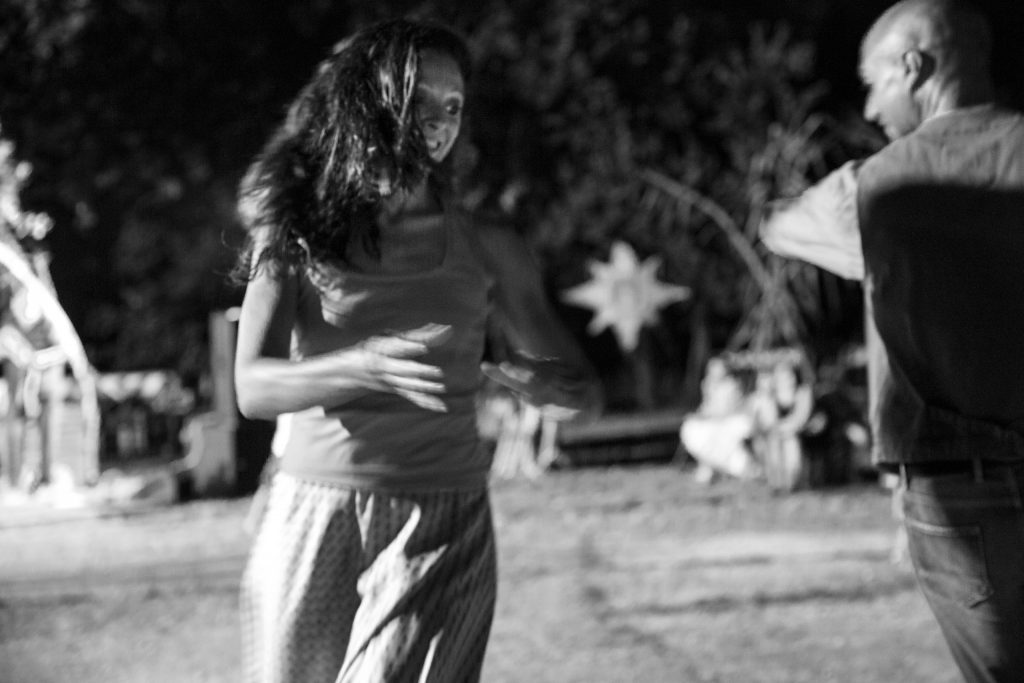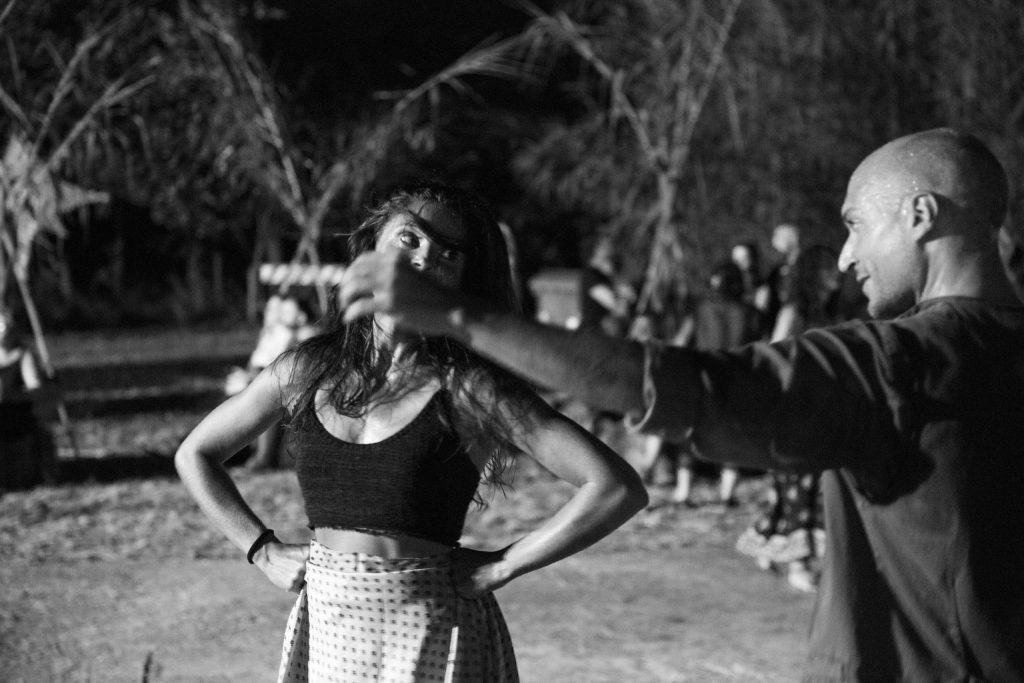
Pizzica has ancient origins that date back to the Dionysian cults of the Mediterranean area. During the celebrations in honor of Dionysus, ancient peoples altered their ordinary behavior by giving themselves over to wild dances, often marked by the sound of the drum.
This ancestral tradition has somehow been preserved in the peasant world of Puglia and in particular in the area of Salento and Grecìa Salentina. The cult of Dionysus is replaced by the figure of Saint Paul, who the Christian tradition interprets as a protector and healer from poisonous animals. At this point the Tarantula enters the scene, an animal that is not very poisonous, but which in the peasant imagination represents a threat to the life and sanity of those who are bitten. The spider inoculates a poison that sends into a trance those who are bitten, and the only antidote becomes dancing to the rhythm of the tambourine, until the last drop of poison is chased away. A fundamental characteristic is the collective ritual of dance and music. The whole community gathers to play and encourage the unfortunate victim (almost always a woman) until exhaustion and liberation. As explored by the anthropologist Ernesto De Martino, it was almost always about social and pathological aspects, where the purification ritual exorcised a widespread malaise that found its cultural legitimacy in the spider's venom, which was actually harmless. Healing from the bite had its ritual setting within the domestic walls, mostly the bedroom, with the exception of rituals that took place in the peasant farmyard or once a year at the chapel of San Paolo in Galatina where the well with miraculous water is located. From which all the tarantate drank during the celebrations in honor of San Pietro and Paolo.

Over time, the pizzica salentina (or pizzica pizzica) became a dance that simulates the courtship of a man/woman and involves a strong circularity, highlighted by the ronda, or the group of tambourine players and musicians that forms around the pair of dancers. At the end of the 90s of the last century, the pizzica transformed again, accelerating the rhythm of the tambourine and giving life to what musicologists call Neo-Pizzica. The best-known example is the Notte della Taranta event. An annual festival that celebrates the music of Salento and infects or rather “pizzicas” tens of thousands of young people from all over the world.



















Leave a comment